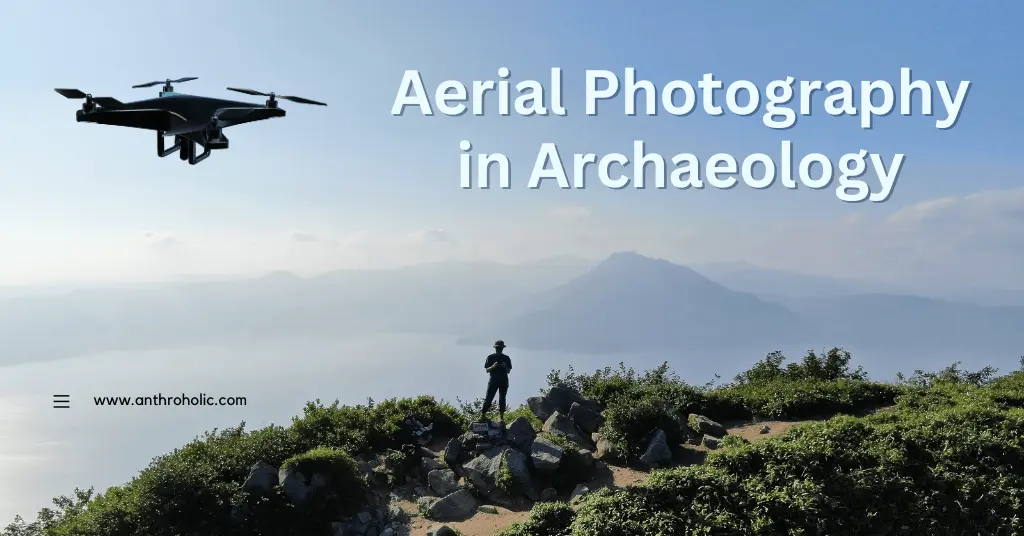AI Answer Evaluation Platform Live Now. Try Free Answer Evaluation Now
Aerial Photography in Archaeology
Aerial photography has led to the discovery of more archaeological features than any other survey method in history. The method also enables the analysis of context and larger areas of land, in contrast to what is often possible with a site-based approach. A significant area of the country was populated from the Neolithic era forward, according to aerial photographs of historical sites across the world. This may be seen as a network of roads, farms, and towns that formerly belonged to a larger local population in certain places, while it might be perceived as isolated spots in others. After presenting a brief history of aerial photography and its use in archaeology, the material below goes on to cover several types of aerial photography, mapping techniques, and applications for aerial sources. In the end, there is a list of the articles that were cited a variety of aerial photography and mapping methods

Methods of Aerial photography
In the context of archaeology photography, aerial images that are taken straight down at the ground or at any angle other than vertical are categorized as either “vertical” or “oblique.”. First, it is necessary to establish stereo pairs, which are overlapping images that allow a viewer to see a scene in three dimensions. Yet stereoscopy is not only used to create 3D images. An interpreter may, for instance, eliminate “sites” caused by processing errors or sensor dust by comparing two printouts. Since the capacity to see in stereo is regarded as a requirement for professional photo interpreters, the fact that we frequently receive stereo images and that photo interpretation is frequently carried out through examination in three dimensions should be seen as evidence of good airborne practice[1]
A camera placed on an aircraft or satellite that makes a series of straight and parallel flights is often used for vertical photography. For stereoscopic viewers to study and experience height, exposures may be selected to produce images that overlap by 60%. This supports and increases the visual interpreter’s confidence. The overlap of more recent photographs, which are shot with the goal of being used as a single layer in GIS, is often significantly lower, making them less useful for image interpretation. The panoramic cameras’ optical distortion led to the collection of Corona satellite images, which provide stereoscopic views that may be more enjoyable after being georectified. Several of the most recent high-resolution satellites are capable of taking stereoscopic images, although the cost of doing so could be too costly for many archaeological projects. Vertical photos are often taken to document a specific piece of land. Any archaeological elements that were at the time visible underneath the camera will be apparent in these pictures. The result is that they measure the ground objectively.
Images from internet sources like Google Earth blend aerial imagery and satellite photos. They should not assume that their position is accurate, particularly in more rural areas where height distortion is noticeable when building facades are visible. The fact that most countries also have images from older times is an essential source of information in places of the world where increasing resource development has harmed historic features. Examples include the RAF’s early post-war survey of Britain and the USAF’s photography of the land in many other countries, including Jordan, Spain, Italy, Brazil, and many more[2]
To capture off-nadir panoramas, oblique views are often taken using a hand-held camera from an aircraft or by tilting an orbiting satellite. This method of taking pictures of historic sites is used by airborne archaeologists because it enables the selection of the optimal angle to highlight a particular feature or the setting. Yet, aerial photographers are less adept at recognizing a place from the air in order to capture it than they would think. Despite this, archaeologists still use a hand-held camera and a single-engine aircraft to photograph the ground. This is crucial since flying requires little advance preparation when crops are responding to subsurface structures and the weather is favorable. As oblique pictures are easier for readers to understand, several publications have relied on them. To aid understanding, they may also be seen as stereoscopic pairs. The majority of oblique archaeological photographs are kept as paper prints, slides, or digital photos in national collections (in the UK), museums, or academic departments of the photographers.
Geoportals or governmental agencies may provide access to ALS data for different parts of the world. Software has been developed for archaeological projects to make them more usable[3]. 40, and a GIS is required for views that are not already hill-shaded.
How Aerial photography is to be interpreted?
The process by which the interpreted attributes are plotted on a base map (or orthophoto) to illustrate their location is known as mapping from aerial photos. Any kind of picture may be utilized for mapping, which compiles data from images taken over the course of many days. When working at scales of around 1:10,000, sketch mapping is employed to detect these properties by sight and, with experience, may be sufficiently accurate. A network of lines linking the same spots on a map and an image may increase accuracy. They provide data from an aerial viewpoint, producing an erratic mesh that resembles graph paper and enhancing mapping precision. In a 1975 publication that also disclosed his early computer strategy of converting point information from an image to a map, Irwin Scollar provided strategies for doing this. The age of computers may still benefit from networks. RCHME studied the use of optical technology in the 1970s[4]
42 Nevertheless, the oblique photos that provided the majority of the archaeological data rendered this impractical. Optical transmission was ultimately supplanted by computer programs that were first used to visually depict information from readings of pictures (Haigh 1991)43, and those programs were then replaced by techniques that altered digital images to conform to a map or other ground data[5]
Modern GIS now contains tools for rectifying images, which help construct a layer of photographic data over which interpretations may be formed, much as those early specialized systems both sought to deal extensively with the issues of oblique picture alteration.
The use of algorithms to create orthophotos and 3D models from a high-density collection of pictures, such as those taken by drones, is one of the most innovative mapping approaches.
Aerial photography purpose
The purpose for which archaeological data are being mapped should dictate the technology to be used and the level of accuracy required. Projects that call for an accurate depiction of archaeological objects will likely need line and polygon data that identifies ditches, banks, walls, and maybe even some specific non-archaeological data. These maps provide an excellent foundation for analyzing colonization trends in a certain area. Moreover, they could be precise enough to match data acquired on the ground and suggest the locations of excavation trenches that need to be dug to address specific problems. Less aesthetically pleasing mapping may be useful for heritage management by enclosing ancient sites in a polygon and providing a textual record in its linked information.
Reference
[1] Palmer, R., 1977. A computer method for transcribing information graphically from oblique aerial photographs to maps. J Archaeological Science 4, 283-290.
[2] Pérez, J.A., Bascon, F.M. and Charro, M.C., 2014. Photogrammetric usage of 1956–57 USAF aerial photography of Spain. The Photogrammetric Record, 29/145, 108-124.
[3] Kokalj, Ž. and Hesse, R., 2017. Airborne laser scanning raster data visualization: A Guide to Good Practice. Založba ZRC: Ljubljana. https://iaps.zrc-sazu.si/en/publikacije/airborne-laser-scanning-raster-data-visualization-1#v
[4] Hanson, W.S. and Oltean, I.A. (eds), 2013. Archaeology from Historical aerial and satellite archives. New York: Springer
[5] Haigh, J.G.B., 1991. The AERIAL program, version 4.1, AARGnews 3, 31-33.




